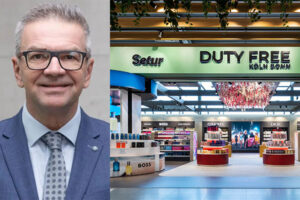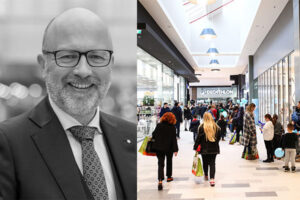The ultimate goal for real estate companies is clear: Climate neutrality is a must for the real estate sector. That target is to be reached by 2050 at the latest, and by 2045 in Germany. That also applies to existing properties, including those in the retail real estate sector. ECE has developed a customized refurbishment roadmap to reach that goal. The distinctive characteristic of the approach lies in the fact that each property is comprehensively evaluated under a holistic approach, taking all of its interactions into account. The result is a tailor-made Energetic Renovation Roadmap that shows the most efficient way to achieve climate neutrality for a given property. The benefits are obvious. Legal standards and taxonomy requirements are met, environmentally harmful emissions are prevented and, last but not least, the sustainable protection and value retention of properties is guaranteed.
However, the path to that goal is complex, especially for high-footfall, highly complex, and highly unique operator properties, such as shopping centers. In addition, early action is required to plan the necessary measures for the long term, to efficiently implement them, and to cleverly integrate them into the asset strategy. Simply implementing individual standard measures, such as installing additional insulation or retrofitting the heating system, makes little sense. However, a package of measures tailored to a specific property and integrated into the long-term asset strategy and that focus on the most suitable and efficient measures is truly effective.
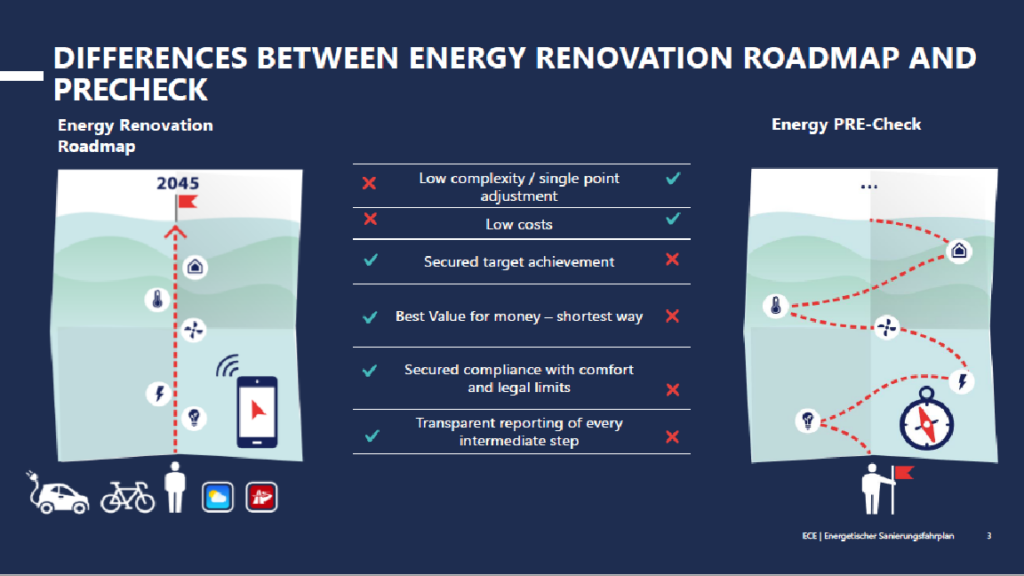
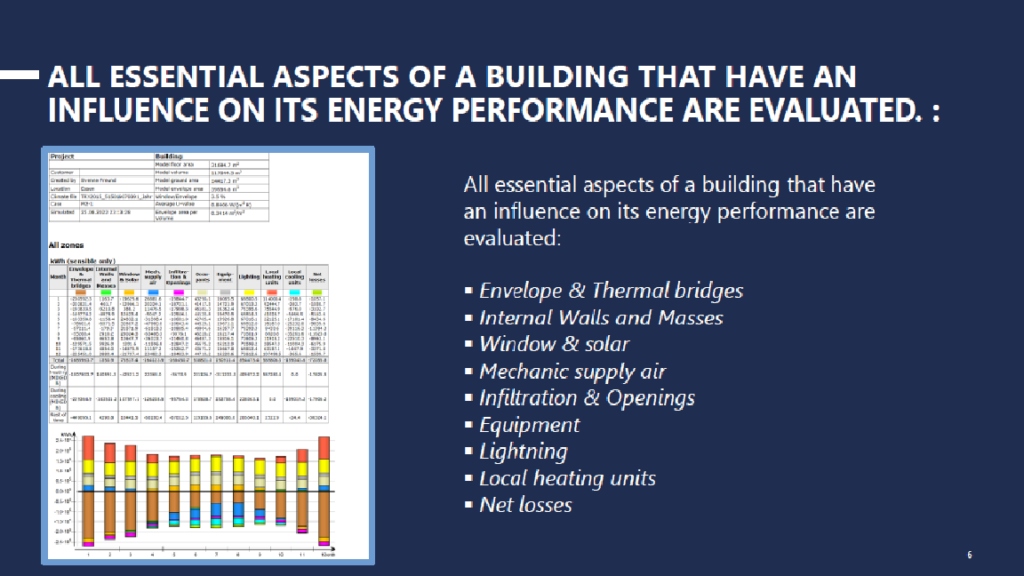
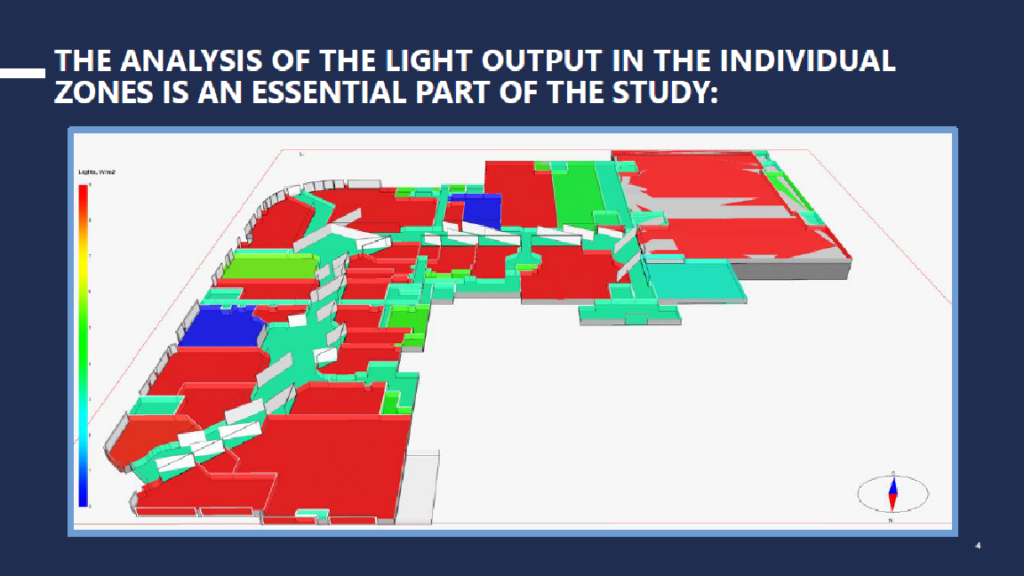
A roadmap in action
A preliminary example of the Energetic Renovation Roadmap can be found in the form of a pilot project: ECE used Alstertal Shopping Center as the model from which it developed the complete refurbishment roadmap, as envisioned – from stocktaking, modeling, and analysis to evaluation, recommendation, and the planning of a package of measures to be integrated into the long-term asset strategy. The result of more than six months of intensive assessment, modeling, and analysis is a comprehensive, approximately 150-page property-specific refurbishment roadmap that lists all recommended measures through 2045 and optimally integrates them into the timeline – from the conversion of lighting to LEDs to the replacement of the ventilation system and the installation of a PV system on the roof. Individual measures can be subsidized by up to 25 percent. The result: A long-term, coordinated plan that leads down the path to climate neutrality and reduces a building’s emissions by more than 90 percent.
Positive feedback from the investors
ECE’s Energetic Renovation Roadmap has already enjoyed market success: Property owners have already commissioned ECE to prepare Energetic Renovation Roadmaps for more than 20 centers – and interest extends far beyond that.
Realizing the energetic renovation roadmap
ECE’s Energetic Renovation Roadmap takes an in-depth look at the shopping center as a whole, analyzing all of its complexities and interactions – right down to the last detail. It identifies the most efficient measures to be taken, based on the results of the in-depth analysis, and prioritizes their implementation.
The procedure thoroughly sheds light on the property:
- A well-founded analysis of the current energy status of the property serves as the foundation. The building’s performance and the mutual effects of numerous key energy aspects are reviewed – from the thermal envelope, ventilation and heating, energy demand, and lighting to “mobile” factors, such as tenants, visitors, and the influence of the outdoor climate.
- Based on the analysis, a complex 3D model, which depicts the current status of the property, is created via the use of innovative simulation software.
- The next step involves a simulation of the implementation of a wide range of measures, the assessment of their impact and efficiency, and the evaluation of their contribution to the goal of climate neutrality.
- The processing and analysis of the collected data and modeling is carried out by experienced specialist engineers who closely examine and comprehensively evaluate measures and interactions.
- The result is a customized, comprehensive refurbishment roadmap for the property in question, which identifies suitable measures and their impact on the energy balance. Of particular note: The most efficient measures – those that make the best possible contribution to the goal of climate neutrality – are identified.
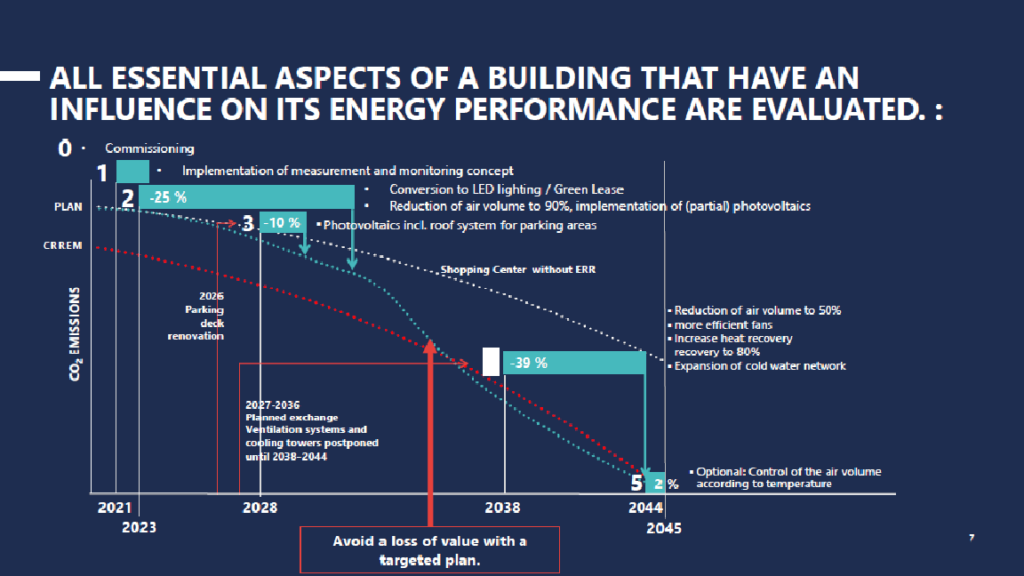
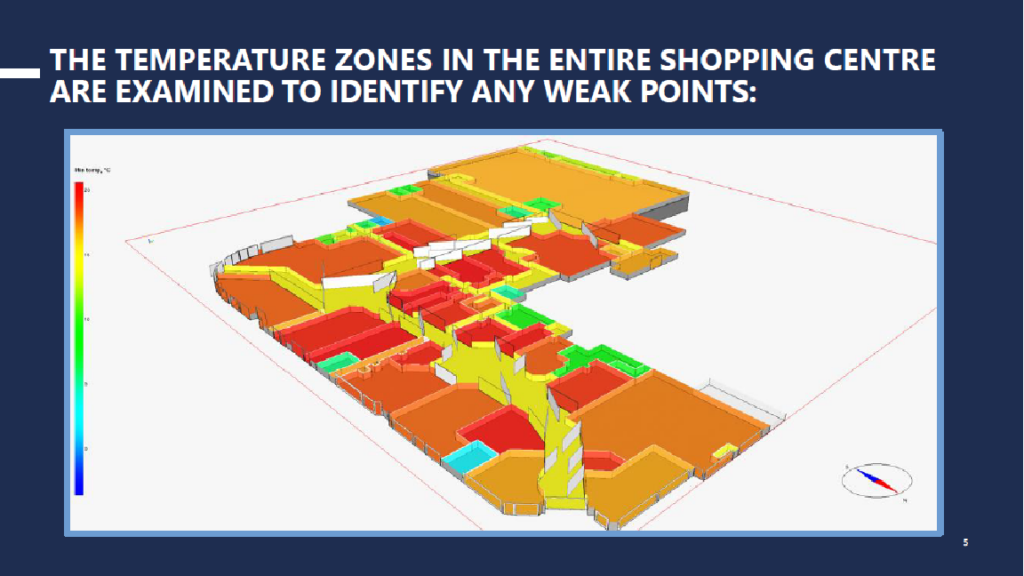
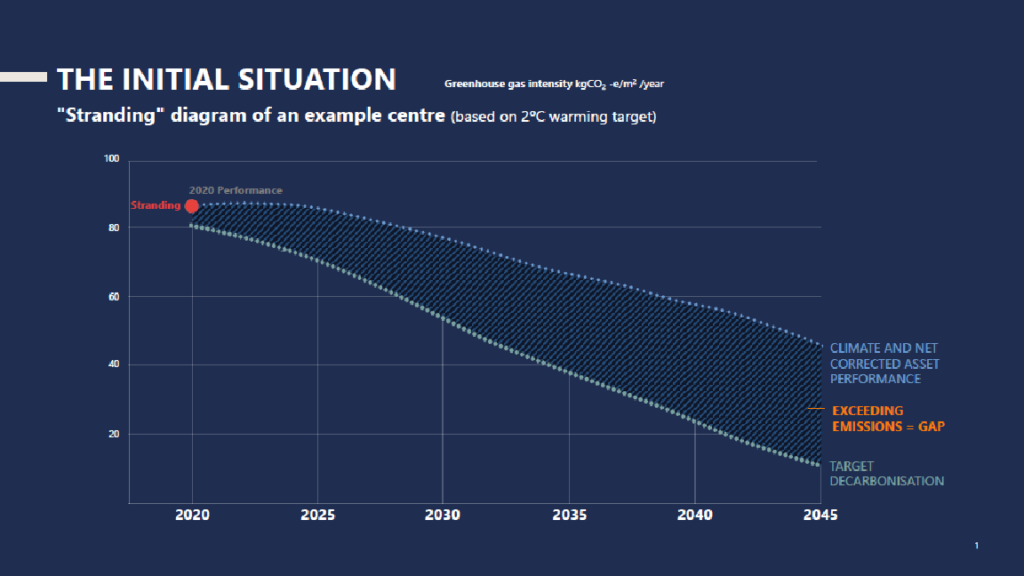
The next step consists of a roadmap for implementation:
- A long-term plan that lists the expected investment costs, integrates the measures into the existing property planning along a property-specific timeline, and outlines the expected effects. As a result, measures can be combined in a practical way or combined and coordinated with modernization or maintenance measures that are planned or required anyway.
- Recommendations for the adaptation of the asset strategy are made accordingly.
- In addition, investment funding opportunities are evaluated and listed.
- All measures as well as their positive effects are presented in the Carbon Risk Real Estate Monitor (CRREM) tool and in comparison with the baseline CRREM value.
The result: A clear, long-term refurbishment roadmap that is individually tailored to the analyzed property, identifying the most efficient measures to achieve carbon neutrality, thereby ensuring that the property retains its value.

“When it comes to ancillary costs, our tenants benefit.”
Ulrich Schmitz, Senior Director Center Operations, ECE Marketplaces, on the benefits of an Energetic Renovation Roadmap for operations.
ACROSS: From an operator’s point of view, what are the benefits of an energy refurbishment plan?
Schmitz: For technical facility management, in particular, the long-term approach and the coordinated planning of measures result in major advantages. The measures emerge from the refurbishment roadmap in a logical sequence, combining financial resources and implemented measures with the greatest possible efficiency.
ACROSS: Can you give us an example?
Schmitz: Imagine, if you will, that a photovoltaic system is to be installed on the roof to feed regenerative electricity into a center’s grid. That in itself is a measure that contributes to the goal of reaching climate neutrality. However, it can only become truly efficient if the PV system is installed when or after the roof has been refurbished, which was due to be carried out anyway – not the other way around. The refurbishment roadmap determines that optimal point in time in the course of its holistic assessment.
ACROSS: To what extent do the center’s tenants benefit?
Schmitz: They directly benefit from the reduction in energy consumption, which goes hand in hand with the climate neutrality measures. As a result, the ancillary costs for the tenants can be decreased or at least stabilized in the long term, given the upward trend in energy costs. The installation of a PV system serves as a good example in that context as well: The tenants directly benefit from the electricity fed into the grid from the systems installed at our centers. As a result, less external electricity has to be purchased.

“The right procedural sequence is key.”
Tobias Pickert, Director Project Management Office, ECE Group Services, on the special technical aspects of the refurbishment roadmap.
ACROSS: From a technical point of view, what makes the Energetic Renovation Roadmap so special?
Pickert: The main advantage is that it gives us a 360-degree view of the entire property. All of the technical systems of a property as complex as a shopping center are interconnected and aligned with one another. If changes are made – for example, with the aim of improving energy efficiency – such changes must be considered in the overall context. That is precisely what the refurbishment roadmap does. However, technical aspects are not the only relevant factors: Lease obligations and regular maintenance measures also play significant roles in the process. Everything is connected to each other, and not only from a technical point of view: The refurbishment roadmap prevents both the technical and economic obsolescence of a given property.
ACROSS: From a technical standpoint, how does the development of a refurbishment roadmap proceed?
Pickert: The entire analysis, evaluation, and planning of measures is supervised by our own specialist engineers. First, they take stock of all the technical equipment present in a building. Then, a dynamic simulation of all energy flows within the property is carried out, on the basis of which a technical action plan is drawn up. This is always checked against all property parameters as part of a 360-degree review – from the contractual obligations and the costs to the technical feasibility for the specific property.
ACROSS: Can you elaborate on that, please?
Pickert: The second step should not be taken before the first – that is the only way in which investments can be planned and implemented as efficiently as possible. For example: If an entire property is converted to LED technology, the energy loads within the building will decrease as less radiant heat will be generated; as a result, smaller ventilation systems and cooling towers can be subsequently installed. Thus, the renewal of the ventilation and cooling technology logically follows the conversion to LED. Lease agreement details also play a role: We are currently converting all leases to “green leases”, in which tenants commit to the sustainable, energy-saving operation of their rental spaces. That has an impact on the dimensioning of the technical systems as well. The refurbishment roadmap arranges all of the measures in the right order.

“The refurbishment roadmap ensures that the value of an asset is maintained.”
André Wittstock, Director Asset Management, ECE Marketplaces, on the importance of the Energetic Renovation Roadmap for center owners.
ACROSS: Why should an investor consider the Energetic Renovation Roadmap?
Wittstock: There are a number of reasons: First, the government’s requirements regarding climate neutrality have become more and more stringent. In addition, the sustainability goals of many investors have become increasingly important, and they want their investments to meet those requirements. Taxonomy requirements, in particular, have put an increasing amount of pressure on the financial sector. In the long term, properties that fail to meet climate neutrality criteria will be seen as risks. Their values will decline, and they will be in danger of becoming “stranded assets”. The refurbishment roadmap can help to prevent such problems via targeted investments and the long-term and sustainable safeguarding of the values of properties.
ACROSS: Do investors enjoy any particular benefits as a result of the Energetic Renovation Roadmap?
Wittstock: Our refurbishment roadmap is highly customizable and extremely detailed. In other words: It provides very clear, technically specific answers regarding the path to carbon-neutral real estate. The roadmap is individually tailored to each property and, above all, corresponds to the investor’s particular interests, schedules, and strategy. Investors are thus provided with detailed, property-specific, and very comprehensive action plans, which they can use to show their stakeholders what has been planned, when, how, and at what cost – as well as how everything ties in with the asset strategy.
ACROSS: What makes ECE the right partner in this regard?
Wittstock: Due to the fact that ECE has been operating the properties for a number of years, it is familiar with the specifics of the real estate – down to the last detail. That is a major advantage. We understand the properties and know, for example, which measures are pending, such as a system replacement or a restructuring, for example. The investor’s goals and the specific characteristics of a property can then be aligned with the energy refurbishment measures in such a way that they are implemented as efficiently as possible and at the right time.


